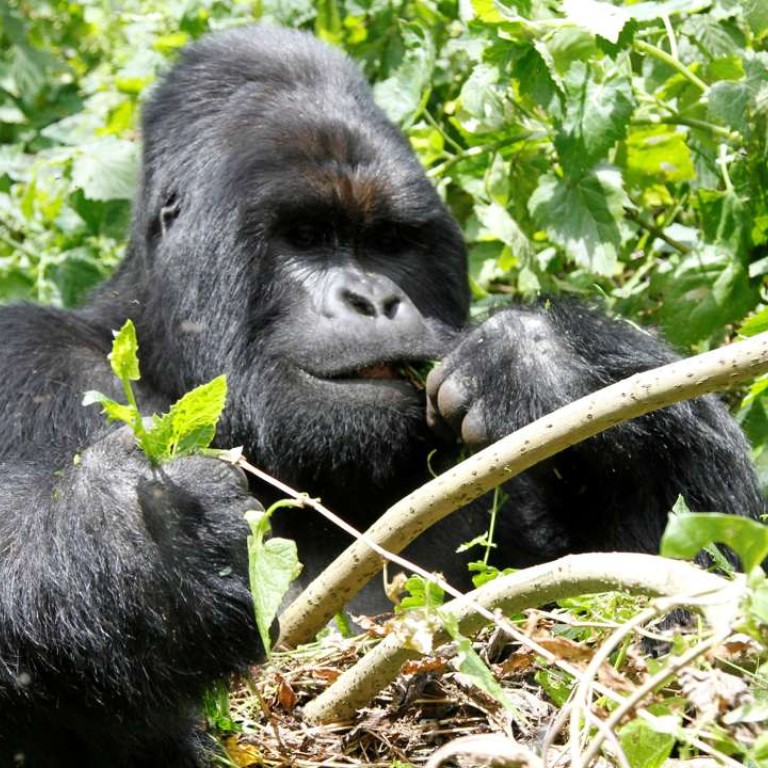
The world’s largest gorillas are now one step from extinction, with ‘critically endangered’ designation
The world’s largest gorillas have been pushed to the brink of extinction by a surge of illegal hunting in the Democratic Republic of Congo, and are now critically endangered, officials said.
With just 5,000 Eastern gorillas (Gorilla beringei) left on Earth, the majestic species now faces the risk of disappearing completely, officials said Sunday at the International Union for Conservation of Nature’s global conference in Honolulu.
Four out of six of the Earth’s great apes are now critically endangered, “only one step away from going extinct,” including the Eastern Gorilla, Western Gorilla, Bornean Orangutan and Sumatran Orangutan, said the IUCN in an update to its Red List, the world’s most comprehensive inventory of plant and animal species.

“Today is a sad day because the IUCN Red List shows we are wiping out some of our closest relatives,” Inger Andersen, IUCN director general, told reporters.
War, hunting and loss of land to refugees in the past 20 years have led to a “devastating population decline of more than 70 per cent,” for the Eastern gorilla, said the IUCN’s update.
One of the two subspecies of Eastern gorilla, known as Grauer’s gorilla (G. b. graueri), has drastically declined since 1994 when there were 16,900 individuals, to just 3,800 in 2015.
Even though killing these apes is against the law, hunting is their greatest threat, experts said.
The second subspecies of Eastern gorilla - the Mountain gorilla (G. b. beringei) - has seen a small rebound in its numbers, and totals around 880 individuals.
According to John Robinson, a primatologist and chief conservation officer at the Wildlife Conservation Society, the Rwandan genocide sparked a disastrous series of events that impacted gorillas, too.
“The genocide pushed a lot of people out of Rwanda, a lot of refugees into eastern DRC, who moved into areas which were relatively unoccupied by human beings,” he said.

Some people hunted gorillas for bushmeat, while activities like mining and charcoal production and human settlement also infringed on gorillas’ habitat.
“The people that moved into that part of DRC saw gorillas as a delicacy,” Robinson said.
The IUCN Red List includes 82,954 species - both plants and animals - and undergoes a major update every four years.
Almost one third - 23,928 - are threatened with extinction, it said.
Compared with previous years, even more species are under threat.
Carlo Rondinini, mammal assessment coordinator at Sapienza University of Rome, said almost 28 per cent of mammals are threatened with extinction, three percentage points more than in the previous mammal assessment in 2008.
“A takeaway point we would like to emphasise is we are not journeying in the right direction with respect to species conservation,” said Andersen.
“We are losing species at a faster pace than we have ever done.”
There was good news for pandas, whose status changed from “endangered” to “vulnerable” due to intensive conservation efforts by China.
The Tibetan Antelope (Pantholops hodgsonii) has also improved, after protections helped it move from “endangered” to “near threatened” following a spate of commercial poaching for its valuable underfur, or shahtoosh, which is used to make shawls.
But the situation deteriorated for others, including the Plains Zebra (Equus quagga) which has been increasingly hunted for bushmeat and skins, and has moved from a species of “least concern” to “near threatened.”
“The population has reduced by 24 per cent in the past 14 years from around 660,000 to a current estimate of just over 500,000 animals,” the IUCN said.
Among the new entries to the Red List is the Psychedelic Rock Gecko (Cnemaspis psychedelica), which is listed as “endangered” and known only to exist on two small offshore islands in southern Vietnam and is highly, and illegally, sought for the commercial pet trade.

.png?itok=arIb17P0)